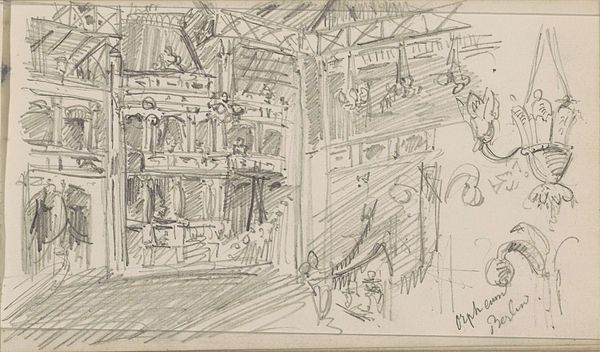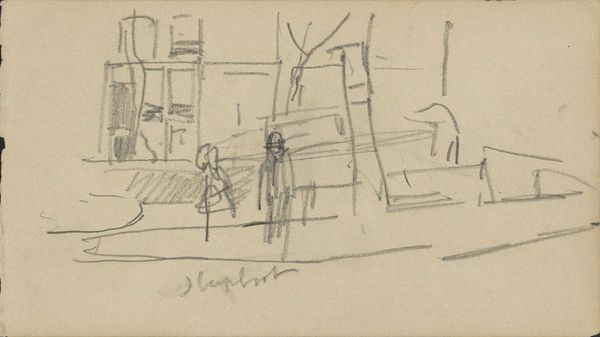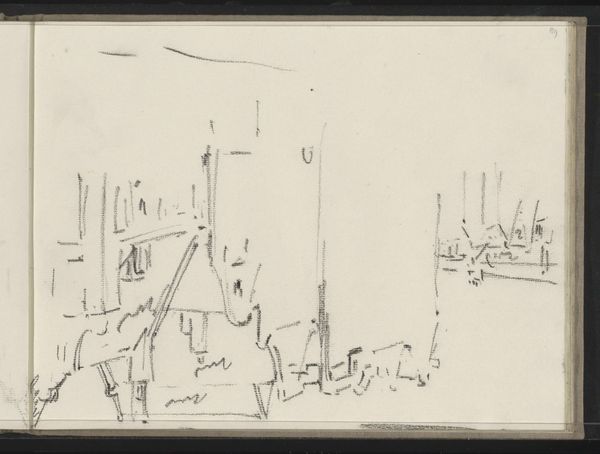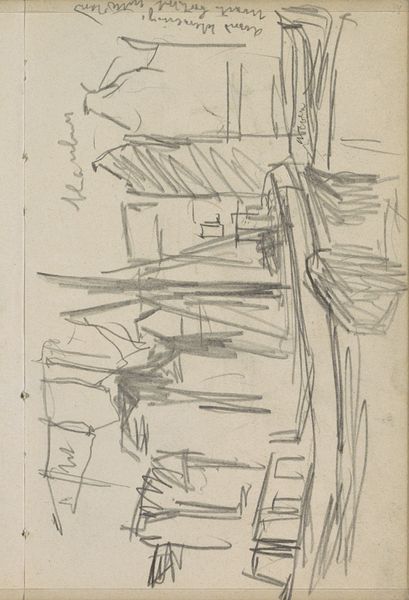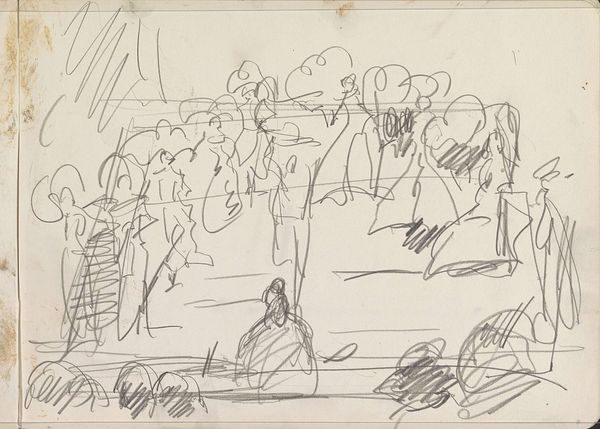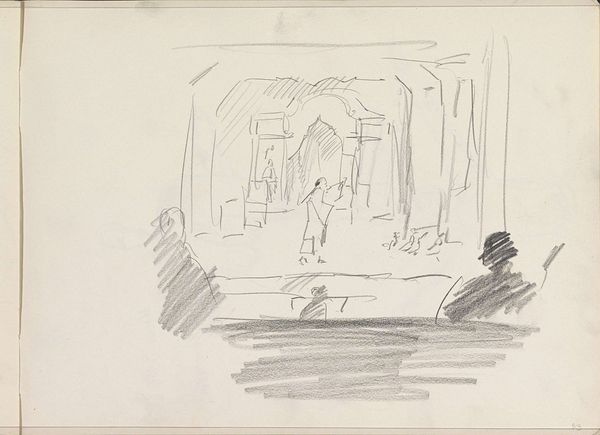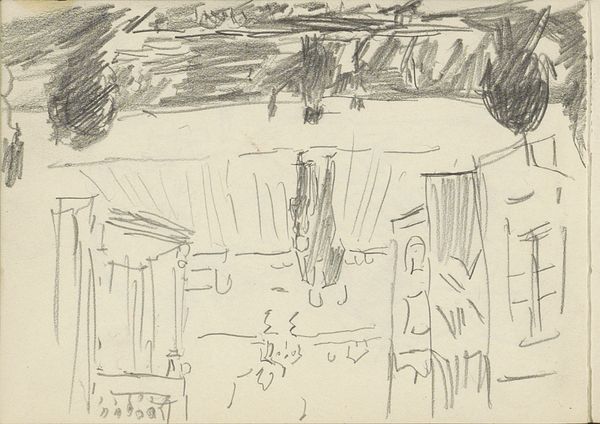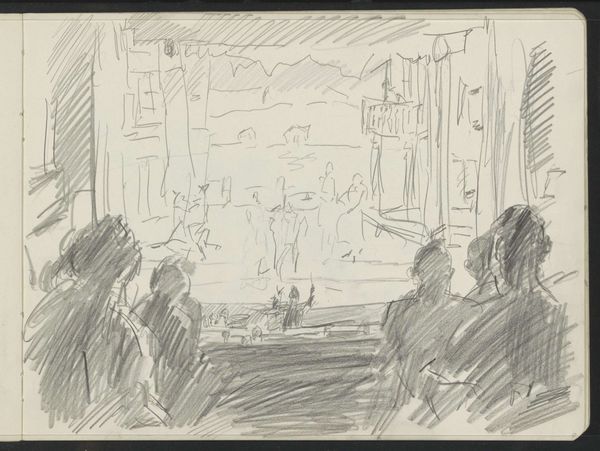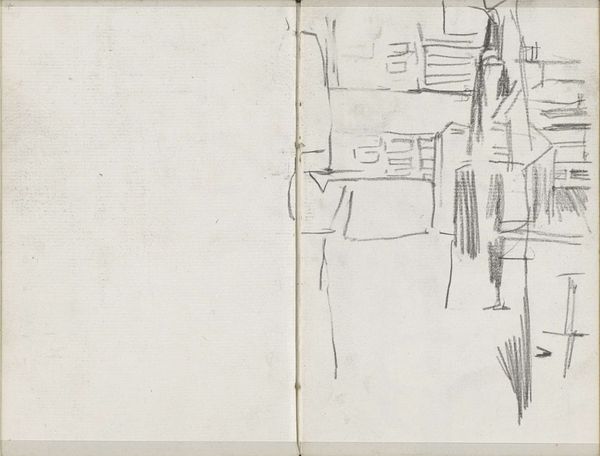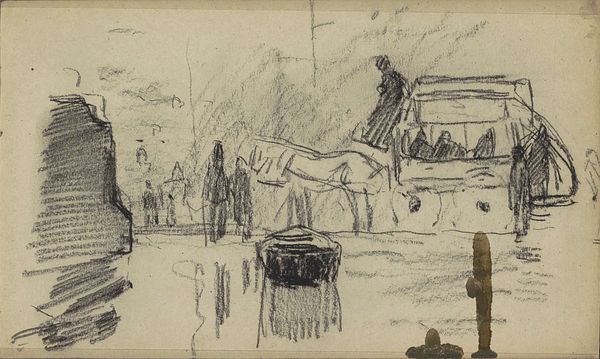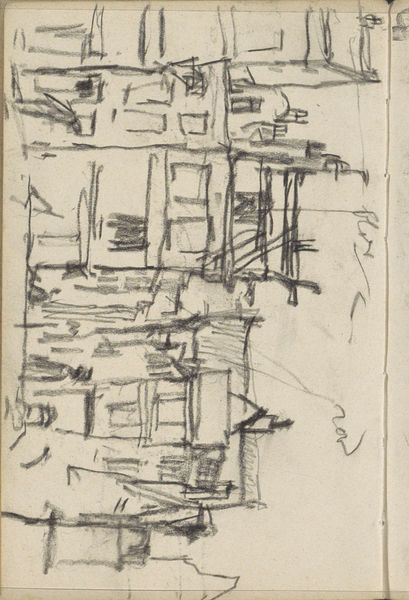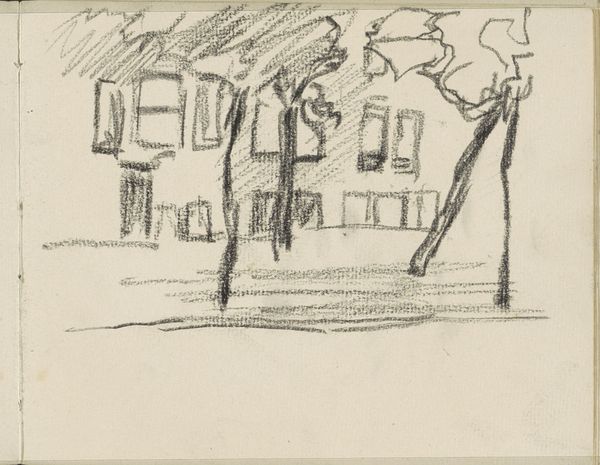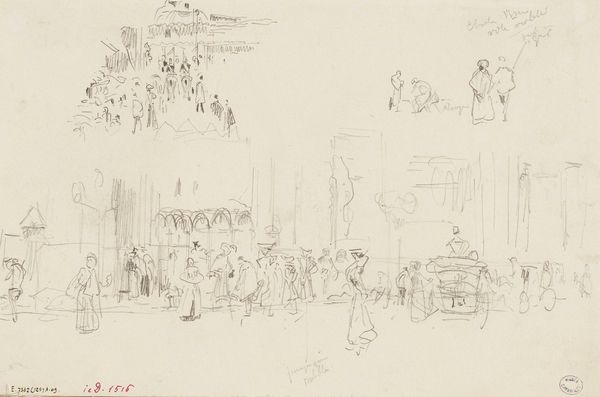
#
statue
#
pen sketch
#
sketch book
#
personal sketchbook
#
idea generation sketch
#
sketchwork
#
ink drawing experimentation
#
pen-ink sketch
#
sketchbook drawing
#
storyboard and sketchbook work
#
sketchbook art
Copyright: Rijks Museum: Open Domain
Curator: Here we have Isaac Israels's "Stadsgezicht," a cityscape likely sketched between 1875 and 1934, now residing here at the Rijksmuseum. Editor: My first impression is of transience, almost like a fleeting thought. It's unfinished, skeletal. There's a deliberate simplicity here, focusing on form rather than detail. Curator: Precisely. Israels was very interested in capturing the bustling urban landscape of his time. He favored quick sketches like these to encapsulate the immediacy of modern life. It’s very much aligned with the rise of Impressionism and its emphasis on capturing the fleeting moment. Editor: Yet the sketch also raises questions about whose city we're viewing. It feels detached, like observing from a distance. We get glimpses of what appear to be figures, perhaps hints of societal structure, but it stops short of real engagement. It begs the question: Is he an active participant, or a detached observer of the socio-political currents swirling around him? Curator: Well, one could argue that the very act of observing *is* a form of participation, right? And this cityscape is hardly unique. Artists, particularly during the late 19th and early 20th centuries, grappled with the changing roles of cities. Amsterdam itself was undergoing rapid transformation and this would lead to both exciting new encounters but it would certainly create social stratification, and even anxiety, which artists frequently reflected in their work. Editor: I agree it’s a record. But it is also very much a reflection on urban alienation. These are social forces in plain sight on any Amsterdam street at this moment in time. So how does the artist portray it? What decisions does he make about who, or what, to focus on? Those silences say a lot about what the dominant culture values or perhaps overlooks. It's not simply a "neutral" depiction. Curator: I think what we're seeing here is perhaps more about Israels capturing an impression, rather than rendering some sort of judgment. Its open nature can engage dialogue from a multitude of points of view. Editor: Ultimately, perhaps that’s what makes it powerful. Israels prompts us to reflect on our place within a social setting and question those often unseen structural constructs that build our societies. Curator: Indeed, its raw form leaves much open to the viewer's interpretation, provoking introspection of an ever changing urban narrative.
Comments
No comments
Be the first to comment and join the conversation on the ultimate creative platform.
